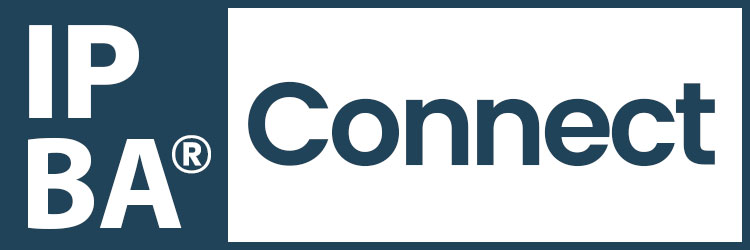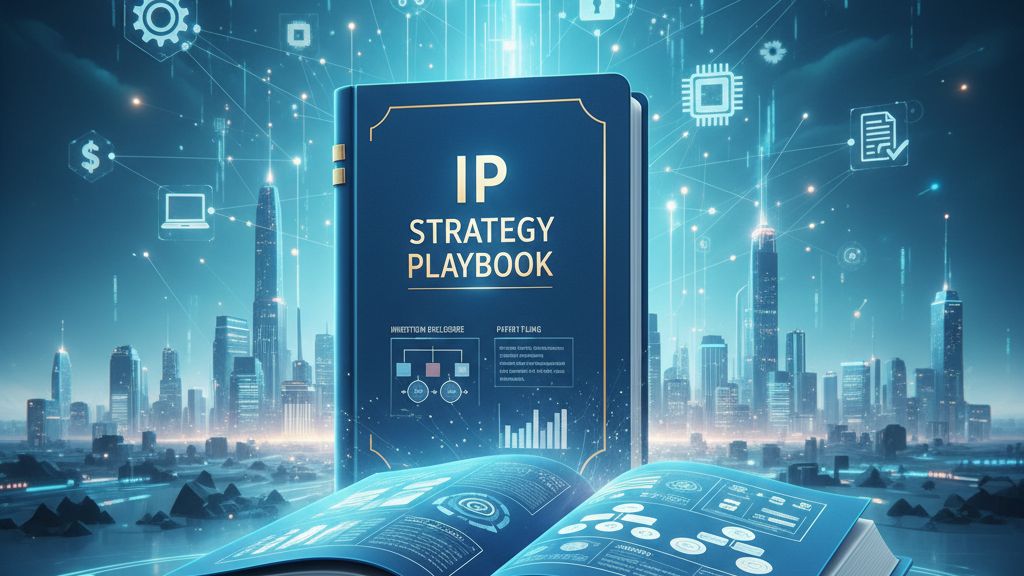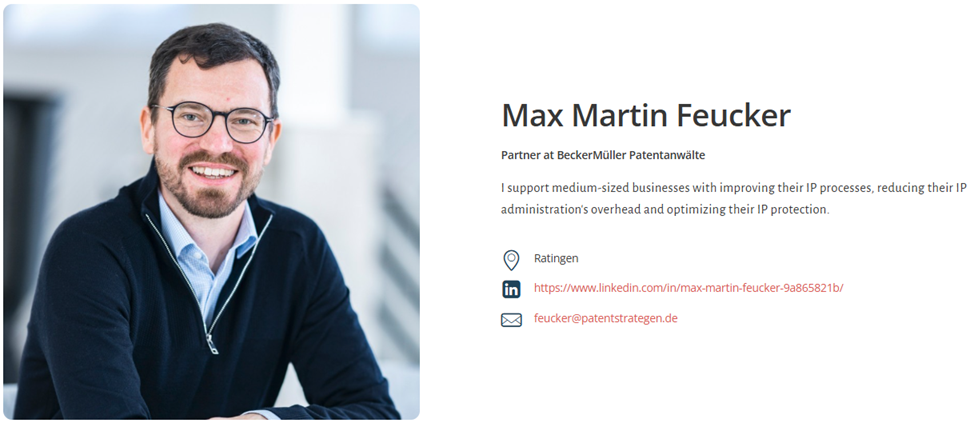Max Feucker is Subject Matter Expert for IP Process Management
In a market where ideas move faster than products, how a company runs its IP work can matter as much as what IP it owns. That was a clear undercurrent at Nordic IP Day, where the ambivalence of IP — simultaneously a mutual growth engine and a source of exclusivity — was on display, alongside a call to treat IP as a governance mechanism for collaboration rather than a siloed legal instrument. In this setting, IP Process Management becomes a decisive lever: it turns scattered know-how, invention disclosures, patent👉 A legal right granting exclusive control over an invention for a limited time. filings, and decisions into a continuous system that reduces risk👉 The probability of adverse outcomes due to uncertainty in future events. and creates value. Max Feucker’s focus on practical, scalable process discipline connects directly to that agenda. This article is a summary of the discussion at the Nordic IP Day on IP process management. An overview of the event will be available here.
The Industry’s IP Process Management Challenge
Across industries, companies grapple with a paradox. They need structure to capture and protect innovation👉 Practical application of new ideas to create value., but they also need speed and flexibility to keep pace with agile competitors. This tension shows up every day in the IP function. When processes are too informal, inventions👉 A novel method, process or product that is original and useful. are missed, patent filings lag, and freedom-to-operate checks come too late; when processes are too rigid, R&D slows and opportunities slip. The stakes have risen as intangibles have grown to dominate enterprise value and as IP has shifted from a legal instrument to a tool for shaping markets and ecosystems.
Scale amplifies the problem. Managing a handful of filings in one jurisdiction is nothing like steering complex families across regions with varied examination guidelines and enforcement cultures. Teams drown in renewals, oppositions, and deadlines, often patched together in spreadsheets that break as portfolios grow. Leadership sees the bill but not the business logic, and IP becomes a cost center rather than a strategy lever. The answer isn’t “more IP” but “better IP processes” that align investment with the business goals and keep quality ahead of quantity.
Global uncertainty adds another layer. IP systems are uneven across countries and collaboration is now a default, not an exception. Nordic IP Day’s framing — IP as a tool for collaboration and shared value creation — demands process maturity: invention capture that works in partnerships, early risk checks that enable open innovation👉 The use of external and internal ideas to drive innovation forward., and IP portfolio decisions that keep room for collaboration and licensing👉 Permission to use a right or asset granted by its owner. rather than only exclusivity.
Finally, digitalization cuts both ways. Modern IP management👉 Strategic and operative handling of IP to maximize value. tools promise automation, instructive dashboards, and data-driven analytics, but without clean data, clear IP ownership, and tool adoption, they becomes another burden. Companies need processes first, then tools that formalize and scale them — never the other way round.
The Process-Related Pain Points Companies Face
When you zoom into day-to-day work, a consistent set of friction points appears. The first is invention capture. Ideas emerge in R&D and product teams, yet many never enter the innovation pipeline because the invention disclosure step is poorly understood by engineers, inconsistently documented, or simply not built the way engineers work. A robust invention disclosure process with clear expectations and review gates is the difference between a successful filing and an orphaned idea.
The second is IP portfolio alignment. Portfolios often accrete through habit: we file because we invented; we maintain because lapsing feels risky. Without recurring reviews that connect assets to products, markets, and differentiation, IP portfolios become expensive museums. Active pruning or licensing of non-core rights creates budgets for strategic filings that actually matter.
A third pain point is the timing and depth of freedom-to-operate. Too often FtO is treated as a late-stage box-tick rather than an early, iterative process aligned to design choices. Late findings trigger re-engineering, delayed launches, or emergency licenses at bad terms. Embedding iterative FtO and competitive monitoring into development cycles lowers surprise IP risk.
Process consistency is another challenge. Different business units or regions may use different documentation templates and approval paths, creating delays and errors. Standard workflows with role clarity and process triggers shorten cycle times and raise process quality, while also making training and handovers easier as teams grow. Here, the right digital support — centralized data sharing, automated reminders, and role-based approval routines — translates ad-hoc processes into consistent everyday behavior.
Cost sensitivity sits behind many of these issues. Leaders ask simple questions — what are we spending, on which patent families, in which markets, and why — and often get inconsistent answers. Without a consolidated view, decisions skew toward inertia. Mature processes that capture the “why” behind filings, combined with IP management tool-driven reporting, shift conversations from cost to ROI and from patent counting to generating competitive advantages. For growing companies, this becomes existential: immature processes that worked at ten IP assets buckle at one hundred. Scaling requires process standardization, IP governance, and automation that grow with the IP portfolio.
Max Feucker’s Approach to IP Process Management
Max Feucker’s approach stands out because it treats IP processes in a business context, not just a legal routine. The emphasis is on making IP useful: aligning filings with commercial intent, reducing IP risk early, and creating the operative framework that lets IP keep pace with product and market change. It is a pragmatic, modular approach that companies can adopt without freezing innovation.
Feucker argues for connecting management decisions through streamlined process directly to growth levers. Optimizing IP processes is not hygiene for its own sake; it is how you convert IP from reactive spend into managed investment. When invention capture involves knowledgeable IP reviews, FTO is coordinated with development cycles, and IP portfolio reviews are tied to product lifecycle milestones, the company spends less guessing and more deciding. For leaders, that converts opaque IP costs into levers they can pull.
IP risk reduction and better IP usage are twin outcomes in this model. Early FTO and competitor monitoring lower the probability and cost of litigation surprises; regular IP portfolio reviews and IP licensing activate underused rights. The same process that prevents crises also uncovers opportunities — cross-licensing for better market access and identification of design choices that maximize protectability where it matters. This is precisely the shift from defensive posture to value creation that many boards ask for but struggle to operationalize.
Digital enablement is treated as an accelerator, not a cure-all. Feucker’s perspective recognizes that IP management tools only help when they automate well-defined processes: centralized data to harmonize information, workflow to enforce approvals and deadlines, and reporting that links spend to strategy. By keeping the focus on process first — then selecting IP management tools to lock in good habits — organizations get compounding benefits instead of getting overwhelmed by data.
What also distinguishes Feucker is the scale sensitivity. Growing companies face a specific inflection: what worked for a dozen families collapses at scale. His guidance on building processes that grow with the business — lightweight where possible, formal where necessary — meets that moment. It invites companies to start small, prove value in one product line or region, then expand the process pattern once it is tried and tested. That is how culture changes: through credible wins that make the change easier.
In the end, the Nordic IP Day theme — IP as an instrument for collaboration and ecosystem growth — depends on process maturity. You cannot share value, negotiate IP access, or orchestrate an ecosystem with a messy process landscape. Max Feucker’s approach offers a clear, adaptable playbook for getting it right, so companies can move from reactive firefighting to proactive, collaborative IP management.


